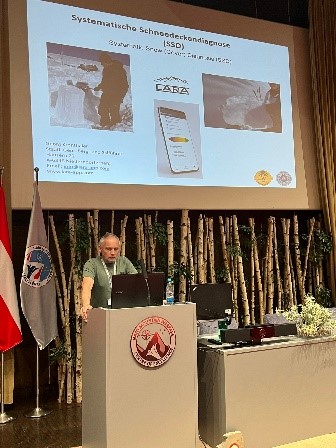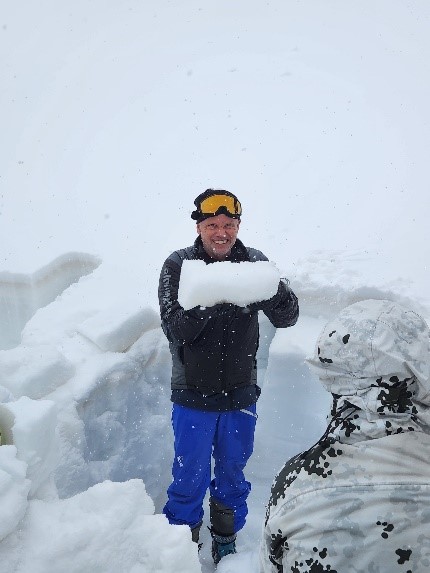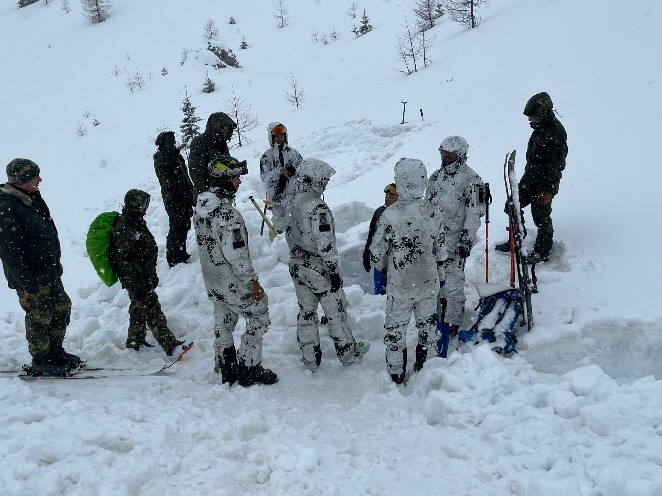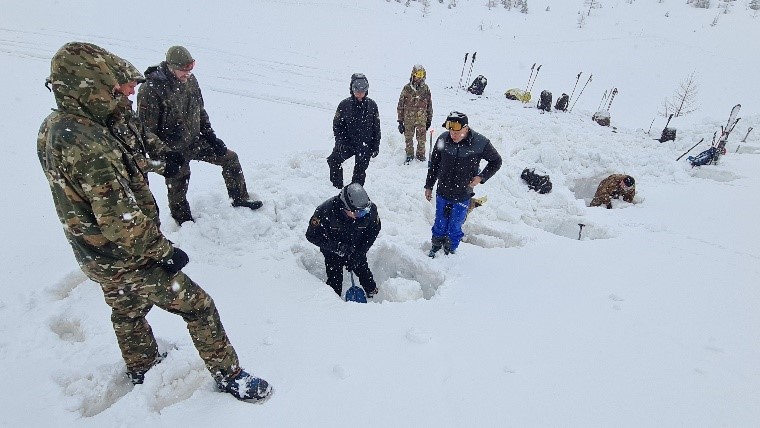Effective Risk Management in winter: Cooperation between the NATO Mountain Warfare Centre of Excellence and Georg Kronthaler
Dennis Jahn2024-04-15T11:36:57+00:00In the high mountains of winter, risk management is essential to ensure the safety of soldiers. This article highlights the collaboration between NATO Mountain Warfare Centre of Excellence (MW COE) and Georg Kronthaler, which is driving innovative approaches to avalanche risk assessment and evaluation.

In the high mountains in general, but especially in winter conditions, away from usable infrastructure and cut off from all communications, precise risk management is essential to minimize potential dangers. In NATO, risk management refers primarily to the assessment and evaluation of a potential enemy. For operations in mountainous terrain, the assessment and evaluation of objective (rock fall, avalanche hazards) and subjective (physical fitness, level of training) hazards must also be taken into account.
“Risk management is not rocket science, it is much more complicated.” Effective risk management requires the ability to assess and evaluate risks. In addition to appropriate training and a high level of technical expertise, this requires simple and user-friendly methods. The NATO MW COE organized a Winter Risk Management Workshop in March 2024 to develop standardized methods for assessing and evaluating avalanche risk for NATO member and partner nations that have units specially trained for mountain operations due to their geographical location or possible deployment in the mountains. Experts from nine nations and representatives from companies such as Pieps, Garmin and Safeback discussed strategies for assessing avalanche risk.

In this context, Georg Kronthaler presented his simplified Systematic Snowpack Diagnosis (vSSD) and Systematic Snowpack Diagnosis (SSD) in conjunction with the LARA application (https://lara-app.com/), which are also used in the German Armed Forces’ mountain guide training programme. Optimal risk management requires the establishment of a separate unit. In the German Army’s mountain troops, this is the Mountain Cell, which consists of experts such as Military Mountain Guides and high mountain specialists. Due to operations in remote and isolated areas, it is often not possible to rely on public avalanche and weather reports when assessing the avalanche risk. This means that the mountain units must use all available resources. Every soldier should therefore be able to act as a sensor. In order to create the conditions for this, a simple method is needed to assess the avalanche danger of a single slope in the direction of movement. This is what the vSSD provides. In a short time, soldiers with basic winter training can be taught how to use the vSSD and deployed as sensors. These many sensors then provide information to the Mountain Cell. This is where the data is collated and evaluated. With the SSD, the transmitted information can be summarized by a Military Mountain Guide (Mountain Cell) and, using process thinking, an avalanche danger level can be created for a specific area. The transmission of information can be supported by the use of the LARA application.




